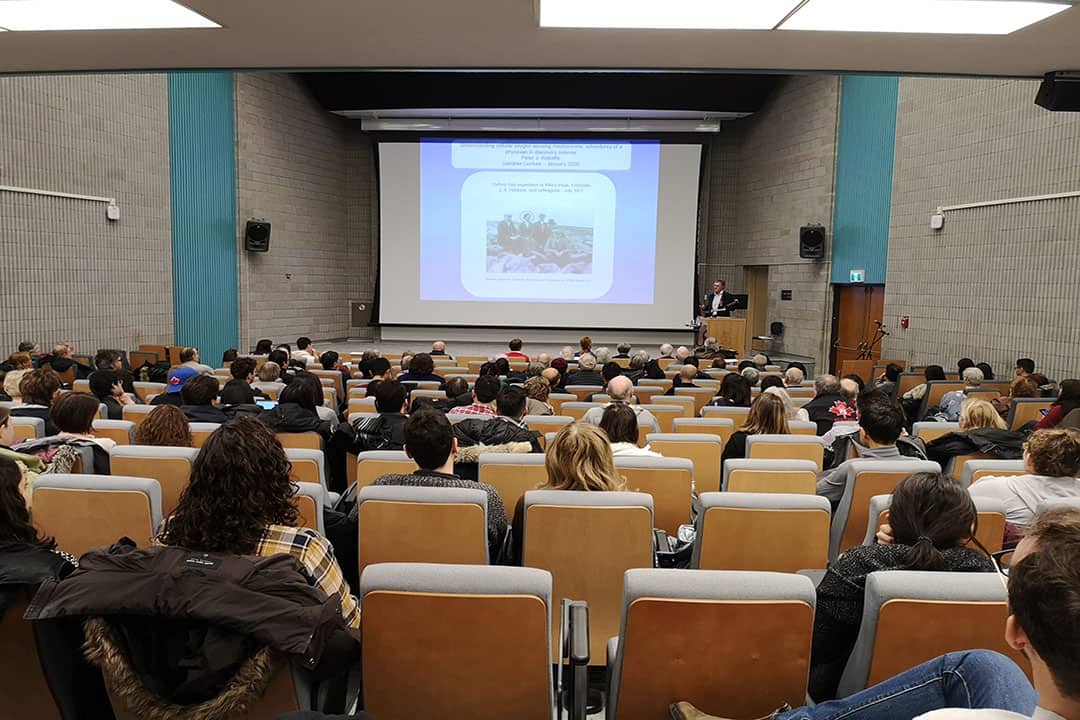On January 19, Sir Peter Ratcliffe, a physician-scientist affiliated with the University of Oxford who won a Nobel Prize in Physiology or Medicine in 2019, graced the halls of the University of Toronto and delivered a talk on his science and success.
As clinical research director at the Francis Crick Institute, Ratcliffe has had a long, sustained interest in the regulation of the hormone erythropoietin, which stimulates red blood cell production when blood oxygen levels are depleted. It was this interest that led him to his discovery of oxygen-sensing mechanisms in cells, for which he was awarded the Nobel Prize along with American scientists Drs. William Kaelin, Jr. and Gregg Semenza.
Ratcliffe’s groundbreaking discovery
Ratcliffe trained in renal medicine as a kidney specialist, and in 1989, he founded a laboratory at the University of Oxford to localize his research to cellular oxygen-sensing pathways in cells and erythropoietin regulation.
In an interview with The Varsity, Ratcliffe mentioned how he got into that area of research. “[You] know that if you donate a unit of blood, then you’ll remake that unit of blood precisely,” he said. “That was [a] fascinating thing to me, that drew me to try and understand [the reasons] why.”
During his talk held at the JJR Macleod Auditorium in the Medical Sciences Building — named after the famed professor who was awarded the same Nobel Prize in 1923 for the discovery of insulin — Ratcliffe detailed how his exploration into erythropoietin led him to discover the oxygen-sensing abilities of cells in multiple organs of the body such as the brain and the liver.
He discovered that when cells respond to changing oxygen availability, it affects other cellular processes. Working independently, Ratcliffe and Semenza each found that protein complexes known as hypoxia-inducible factors (HIFs) are central to how cells respond to changing oxygen levels.
The protein complex HIF is made up of two parts: HIF-1 alpha and HIF-1 beta.
Hypoxia is a condition which occurs when cells are deprived of oxygen. When it occurs, HIF-1 alpha signals for cellular processes to adapt in response to the change in oxygen levels. But when oxygen levels are high, HIF-1 alpha is degraded.
The impact on cancer research
Why is this important knowledge? For one thing, it has implications for cancer and anemia research. For example, HIFs exacerbate the growth of cancerous cells and allow them to survive in hypoxic conditions. Therefore, drugs that inhibit HIF activity could halt the spread of cancer.
Ratcliffe also believes that a large part of his findings’ merit is that it will impact knowledge and what we know about the human body.
“[The body] probably has worked that way for 500 million years, and should there be another 500 million years, that will be the way that cells sense oxygen,” he said. “That information is robust, and many may build on that with all sorts of applications.”
In his talk, he presented a letter that he received from the prestigious journal Nature in 1992. The correspondence reveals Nature’s inability to publish his work at the time due to a lack of peer-reviewers. His work was so new, there were hardly any experts in the area. However, Ratcliffe urged scientists not to lose hope.
In a past interview with Nobel Media, Ratcliffe noted the value of courage.
“It is important that scientists have the courage and are allowed to derive knowledge for its own sake,” he said. “[The] history of science tells us over and over again that the value of that knowledge can increase with the impact on other people’s research, other circumstances, [and] all sorts of random and unpredictable issues brought to bear.”


